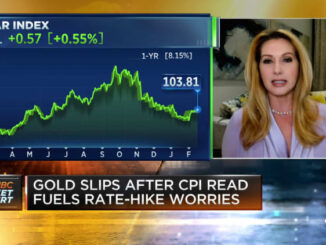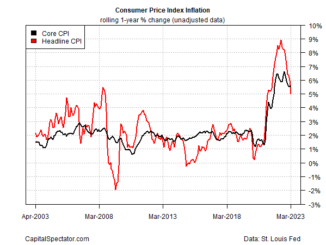
Anyone who thinks he or she has an accurate feel for what the peak shipping season will look like between now until around Halloween clearly has not been paying attention to the wacky ups-and-downs of the past two years. First came the economic shutdown induced by the COVID-19 pandemic. Then came an…
Anyone who thinks he or she has an accurate feel for what the peak shipping season will look like between now until around Halloween clearly has not been paying attention to the wacky ups-and-downs of the past two years.
First came the economic shutdown induced by the COVID-19 pandemic. Then came an overheated economic rebound that taxed the limits of production of items ranging from toilet paper to computer semiconductor chips.
Now the nation faces at least a one-in-three chance of an economic recession, according to the best guessers of such things.
But what will this year’s peak shipping season look like? Clearly, that’s anyone’s best guess as well.
As the inflation rate hit 8.5 percent this spring, pressures for fiscal tightening became more acute. The Federal Reserve has acted swiftly with a series of interest rate hikes designed to tame inflation without hurting the overall economy.
But while hospitality, restaurants, and airlines are recovering nicely, booming sectors of durable goods, retail, housing, home improvement and e-commerce are beginning to see economic slowdowns and expectations of lower future inflation began to bite into current demand.
“In short, the logistics sector must simultaneously contend with the hangover of red-hot demand and worries of a revenue-diminishing and inventory-swelling downturn,” the 33rd annual State of Logistics (SoL) report summarized. “Relative stability”—whatever that actually means nowadays—may or may not return, so the logistics sector must invest now in controlling what factors it can, the report added.
That means reducing fuel-cost vulnerabilities – as diesel surpasses $6 a gallon in some parts of the country — and abating the risk of future weather-related disruptions even more severe than the ones that rocked supply networks the past two years.
May was the second-busiest month on record for the Port of Long Beach, and its strongest month so far this year. Dockworkers and terminal operators processed 890,989 twenty-foot equivalent units (TEUs) in May, the port said. That was a 1.8% decline from May 2021, which remains the Long Beach Port’s busiest month in its 111-year history.
Imports decreased 1.7% to 436,977 TEUs and exports were down 12.6% to 118,234 TEUs. Empty containers moved through the port increased 2.6% to 335,778 TEUs.
“We are moving an extraordinary amount of cargo and continue to work with industry partners to quickly move imports and empties off the docks,” Port of Long Beach Executive Director Mario Cordero said. “Looking ahead, we are ready for the traditional summertime surge to coincide with China’s recovery from a lengthy lockdown.”
The Port has withheld the start of a “Container Dwell Fee” that would charge ocean carriers for containers that remain too long on the docks. The San Pedro Bay ports—Long Beach and Los Angeles—have seen a 40% decline in aging cargo on the docks since the program was announced on Oct. 25.
A cargo influx is anticipated as pandemic-induced shutdowns are lifted in China, the port said. Strong income gains and a large savings cushion are anticipated to support consumer spending this year, despite the ongoing risks of inflation, the war in Ukraine and the recent lockdown in China. Increases in core durable goods shipments suggest business investment continues to progress at a steady clip.
There’s not only congestion at ports and on land but in warehouses as well. Southern California’s Inland Empire in San Bernardino-Riverside-Ontario area, about an hour east of Los Angeles, is one of the country’s key transportation and freight hubs.
Melinda McLaughlin, senior vice president of global research for Prologis, a major warehouse landlord for Amazon and other e-commerce players, recently noted the vacancy rate for warehouse space in that area is less than 2%. Few are building new warehouses, either. Land costs for that prime real estate have skyrocketed by more than 50% in just the past 18 months, McLaughlin said.
Meanwhile, the logistics landscape will be shaped by a range of macro forces, several of which are closely interrelated. They include higher interest rates, global inflation, sharply higher fuel costs and surcharges and the continuing modal tightening effects of the truck driver shortage and even shipping containers.
Brokers estimate that as many as 12% of the estimated 50 million shipping containers are stuck either at ports or inland distribution centers for longer-than0-expected periods.
Normally, experts say, it takes an average of 45 days turnaround for exports from China to reach U.S. importers. But lately, that span has more than doubled to around 100 days, according to ocean executives. Delays of exports from Singapore and imports at West Coast ports here are cited for the shortage of containers.
Meanwhile, a lack of warehouse space in the U.S.—especially on the West Coast at the Inland Empire of Southern California—are making matters worse. The North American warehousing market now estimated at $80 billion—and growing double-digits annually.
Shippers are coping in an era of increased vendor lead times, uncertain supply and sharply rising customer expectations. As a result, they are keeping more inventory on hand, resulting in a boom for warehousing.
Net absorption (a standard measure of occupancy) rose 48 percent last year. Vacancy rate fell from 5.1 percent in 2020 to just 3.7 percent last year. The market responded strongly to this hike in demand. Warehouse rents rose by 9.5 percent in 2021, nearly twice as fast as in 2020. Warehouse square footage under construction grew by 54 percent year-over-year.
Wages have risen as high as $19 per hour for warehouse personnel. That’s nearly 50 percent above the national average. Signing bonuses of $3,000 or more are not uncommon.
“Companies that long viewed warehousing as a sleepy backwater need to recognize it is now an essential strategic competency,” the SoL report warned.
All in all, logisticians are warned, be prepared for nearly anything, if past is prologue.
As Tom Barkin, president of the Federal Reserve Bank of Philadelphia, said at a recent webinar, “The supply chain is Whac-a-Mole. People say you solve one problem and then you have another one.”
Source: Supplychain247.com



